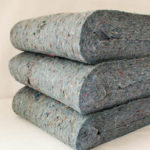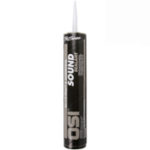
Seasonal fluctuations in a room’s temperature can make your speakers sound different in winter vs. summer. Meanwhile, a pocket of cold air forming in a warm room can impact how you perceive sound the same day. It is important to maintain a consistent temperature in rooms like auditoriums, theaters and studios where sound quality is a top priority.
How Does Temperature Affect Sound?
Temperature affects sound by altering the medium through which sound travels — the air. Cold air slows sound energy, while warm air allows it to travel faster. Understanding why this occurs requires a basic understanding of how sound travels and how temperature determines the air’s density.
The Speed of Sound at Room Temperature
When a source makes a sound, it releases energy. The energy moves through the air’s countless molecules, creating a sound wave. The wave travels at the speed of sound, which is around 343-346 meters per second at room temperature.
The Density of Warm and Cold Air
When the room’s temperature increases, the air becomes less dense. Put another way, decreasing the temperature increases density. The decrease in density makes warm air molecules more conducive to motion — such as sound waves — than cold air.
The Speed of Sound in Warm Air vs. Cold Air
The speed of sound and temperature go hand in hand. Sound energy travels more easily when the air is less dense. Therefore, sound travels faster through warm air and slower through cold air.
When the air gets close to 0 degrees Celsius or 32 degrees Fahrenheit, the speed of sound drops to around 331 meters per second. Meanwhile, when the air reaches 50 degrees Celsius or 104 degrees Fahrenheit, the speed of sound increases to around 360 meters per second.
The Ideal Temperature for Acoustics
The truth is that the exact temperature matters little from an acoustics perspective. What matters is maintaining a consistent temperature.
When the temperature in a space is consistent, sound will travel to each corner at the same speed. The consistency allows audience members in a theater, for example, to perceive sound similarly, whether they are front and center or in the back of the balcony.
For instance, in a high-fidelity recording studio, the mixing engineer needs the room to remain at a consistent temperature so they can perceive the song’s most intricate sonic details. If the room allows a pocket of cold air to seep in, the sound will interact differently with that pocket than the rest of the room. Some portions of a sound wave will reflect before the rest, causing sonic inconsistencies that could distort the mixing engineer’s frequency perception in ways that detract from the mix.
Improve Your Space’s Acoustics With Soundproof Cow
Since temperature fluctuations can alter the way sound moves through a room, keeping warm air in and cold air out will make your speakers sound better when watching television or listening to music. Soundproof Cow has just the solution.
From soundproofing insulation that retains a room’s heat to acoustical sound sealants that can fill cracks around your windows, Soundproof Cow has plenty of ways to control the way sound travels through the air. Browse our soundproof materials to discover tons of effective options.








